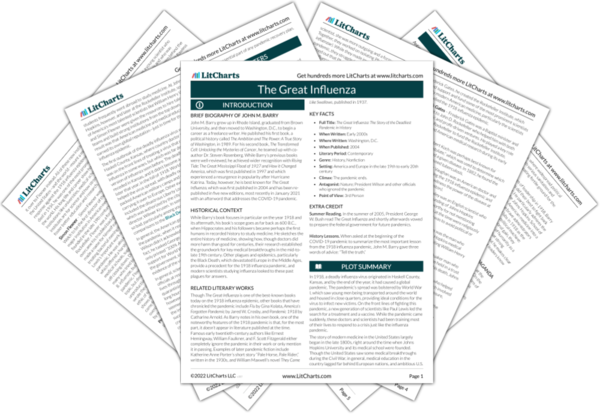While the 1918 influenza pandemic was in many ways an unprecedented event, it also followed a pattern from history. Barry brings this up not only to provide context for 1918, but perhaps also as a way of suggesting that today’s public health officials shouldn’t get complacent, since there is ample historical evidence about how diseases can mutate and spread rapidly.
